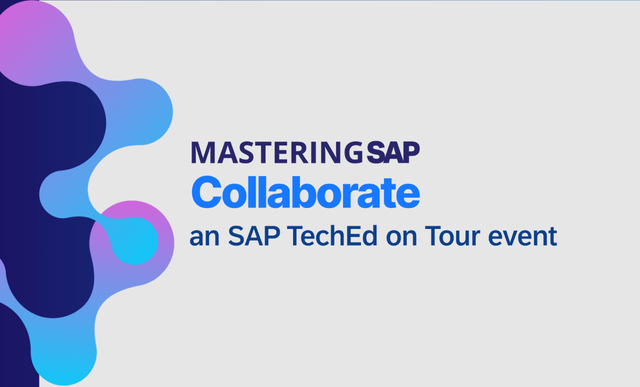SAP Planning & Consolidations
Filter By
Browse By
- SAP Analytics and AI
- SAP Application Development and Integration
- All SAP Application Development and Integration
- SAP ABAP
- SAP ABAP Development Tools
- SAP ABAP Test Cockpit
- SAP API Management
- SAP BAPI
- SAP Basis
- SAP BRF
- SAP Business Application Studio
- SAP CMS
- SAP Design Studio
- SAP Development Tools
- SAP DevOps
- SAP EAI
- SAP EDI
- SAP Extension Suite
- SAP Fiori
- SAP Fiori Elements
- SAP Integration Suite
- SAP Low Code Application Development
- SAP Low Code Automation
- SAP Netweaver
- SAP Release Management
- SAP UI5
- SAP Web Application Server
- SAP Web IDE
- SAP Business Process Management
- SAP Center of Excellence
- SAP CIO
- SAP Customer Experience
- SAP Data and Data Management
- All SAP Data and Data Management
- SAP BW
- SAP BW/4HANA
- SAP Crystal Reports
- SAP Data Archiving
- SAP Data Center
- SAP Data Governance
- SAP Data Integration
- SAP Data Migration
- SAP Data Quality
- SAP Data Services
- SAP Data Strategy
- SAP Data Visualization
- SAP Data Warehouse Cloud
- SAP DMS
- SAP Document Control
- SAP EIM
- SAP ETL
- SAP ETL Tools
- SAP HANA
- SAP HANA Administration
- SAP HANA Deployment Infrastructure
- SAP HANA Studio
- SAP Master Data
- SAP Master Data Governance
- SAP MDM
- SAP Enterprise Architect
- SAP Enterprise Asset Management
- SAP ERP
- SAP Finance
- All SAP Finance
- SAP Accounting
- SAP AR AP
- SAP Asset Accounting
- SAP Billing Systems
- SAP BPC
- SAP BRIM
- SAP Cash Management
- SAP Central Finance
- SAP Controlling
- SAP COPA
- SAP Cost Center Accounting
- SAP Currency Risk
- SAP e-invoicing
- SAP FICO
- SAP Finance Automation
- SAP Advanced Financial Closing
- SAP Financial Consolidation
- SAP Financial Planning
- SAP FX Risk
- SAP General Ledger
- SAP Global Tax Management
- SAP Hyperion
- SAP Order to Cash
- SAP Payment Processing
- SAP Profitability Analysis
- SAP Rebate Management
- SAP S/4HANA Finance
- SAP SWIFT Compliance
- SAP Treasury Management
- SAP Universal Journal
- SAP Governance Risk and Compliance
- SAP Human Capital Management
- SAP Intelligent Technologies
- SAP Platform and Technology
- All SAP Platform and Technology
- SAP Business Technology Platform
- SAP Cloud
- SAP Cloud Connector
- SAP Cloud Integration Platform
- SAP Cloud Migration
- SAP Cloud Platform
- SAP Cloud Providers
- SAP Cloud Strategy
- SAP Digital Signature
- SAP Container Platform
- SAP HANA Enterprise Cloud
- SAP Digital Asset Management
- SAP Smart Forms
- SAP HEC
- SAP Digital Integration Hub
- SAP Hyperscalers
- SAP Infrastructure
- SAP Messaging
- SAP Quality and Testing
- SAP Security
- SAP Spend Management
- SAP Supply Chain Management
- All SAP Supply Chain Management
- SAP APO
- SAP Asset Management
- SAP Business Network
- SAP Digital Manufacturing Cloud
- SAP Digital Twin
- SAP EWM
- SAP IBP
- SAP Inventory Management
- SAP Label Printing
- SAP Logistics
- SAP Manufacturing
- SAP Manufacturing Automation
- SAP MES
- SAP MII
- SAP MM
- SAP MRO
- SAP MRP
- SAP Order Management
- SAP Plant Maintenance
- SAP PLM
- SAP Production Planning
- SAP S&OP
- SAP SD
- SAP SPM
- SAP Supply Chain Planning
- SAP Track and Trace
- SAP Transportation Management
- SAP System Administration
568 results
-

2 Ways to Connect to Data Sources Using SAP BusinessObjects Cloud
Reading time: 8 mins
SAP BusinessObjects Cloud offers data connectivity to many on-premise and cloud data sources. You can either acquire data into SAP BusinessObjects Cloud or connect to the data source in real time without any replication. Learn how you can use each of the data sources available in SAP BusinessObjects Cloud, then review the use cases and…
-

- SAP Supply Chain Management
 Premium
Premium
Building a Digital Framework for the Supply Chain
Reading time: 8 mins
Companies need to align their strategic and operations plans and find ways to maximize their working capital investments to ensure that they get the products they want when they want them. They also need to orchestrate the transition from planning to execution, remove fixed lead times, and balance agility and efficiency. With fast and responsive…
-

- SAP Global Tax Management
 Premium
Premium
Growing Compliance Complexity Driving Approach to Tax Planning, Tax Technology and Innovation
Reading time: 5 mins
The global tax landscape has become increasingly complex, as governments around the world are changing the ways that they monitor companies and ensure compliance. SAP S/4HANA-enabled transformation has far-reaching impacts on tax departments, including Direct Tax, Indirect Tax, Transfer Pricing, and Trade & Customs. To explore the implications on tax planning, tax technology, and innovation,…
-
-

- SAP Application Maintenance
 Premium
Premium
Plan and Schedule a Sustainment Program for Complex Assets to Increase Uptime
Reading time: 21 mins
Managing a fleet of complex assets requires a well-organized and detailed approach to document maintenance requirements and to schedule their execution. The aim is to balance uptime for the asset and leverage the use of the repair facility. These capabilities are available using SAP’s Maintenance Program Definition (MPD) Workbench and Maintenance Event Builder (MEB). Using...…
-

 Premium
Premium
3 Ways to Handle Compensation Budget Imbalances Caused by Org Moves
Reading time: 10 mins
Learn the pros and cons of options for budget reallocation – manual and automatic – when you cannot postpone the movement of staff during a compensation planning period. Key Concept For many organizations, the compensation planning period is aligned with the end or beginning of their fiscal year. This is a time when many transfers,...…
-

 Premium
Premium
Improve Your Planning and Execution Process for a Successful SAP Go-Live
Reading time: 20 mins
ManagementLearn about the Technical Implementation Gantt (TIG) methodology for improved planning and execution of your cutover. Understand the approach to build and review the TIG, its execution, and the benefits of using it. Also understand some of the pitfalls that you can avoid and best practices you can put to use for a successful go-live....…
-

How to Build a Resilient and Efficient Supply Chain With Robust Sales and Operations Planning Using SAP IBP S4HANA
Reading time: 9 mins
Sales and operations planning (S&OP) helps companies estimate the demand for their products/services at an aggregate volume level using some form of forecasting method and incorporating inputs from the sales and marketing teams. Many organizations, in their race to embrace technology, ignore a key ingredient for the successful implementation of their S&OP: organizational readiness. Drawing…
-
-

- SAP Supply Chain Management
 Premium
Premium
Demand-Driven Planning for S/4HANA and ERP
Reading time: 3 mins
Demand-driven replenishment, demand-driven planning, or demand-driven MRP help in efficiently planning and managing supply chains based on customer demand, as opposed to traditional MRP procedures. DDP decouples material flows, makes them less vulnerable to supply chain disruptions, and ensures the availability of relevant products through dynamically managed buffers. In this article, know how decoupling material…
-

Demand-Driven Planning – Step 4 – Demand Driven MRP (DDMRP)
Reading time: 4 mins
Demand-driven Material Requirements Planning (DDMRP) is a modern approach to supply chain management that focuses on meeting customer demand efficiently while minimizing inventory costs. Unlike traditional Material Requirements Planning (MRP) systems, which rely on forecasted demand and fixed lead times, DDMRP uses actual customer demand signals to drive replenishment decisions in real time. By continuously…
-

- SAP Finance Automation
 Premium
Premium
Enabling Budget Resilience with Scenario Planning Tools from Phocas
Reading time: 3 mins
Scenario planning process is often seen as time-consuming, leading to insufficient utilization and limits organizations' capacity to prepare for or respond to changes. Many finance teams find themselves hamstrung by the limitations of their SAP ERP systems when attempting to implement effective scenario planning, a critical component of strategic budgeting and forecasting. The traditional reliance…
Become a Member
Unlimited access to thousands of resources for SAP-specific expertise that can only be found here.
Become a Partner
Access exclusive SAP insights, expert marketing strategies, and high-value services including research reports, webinars, and buyers' guides, all designed to boost your campaign ROI by up to 50% within the SAP ecosystem.
Upcoming Events
-

Mastering SAP Collaborate, an SAP TechEd on Tour event
November 12 - 14, 2025
Sydney, New South Wales
Australia
View Event
Related Vendors
Your request has been successfully sent

